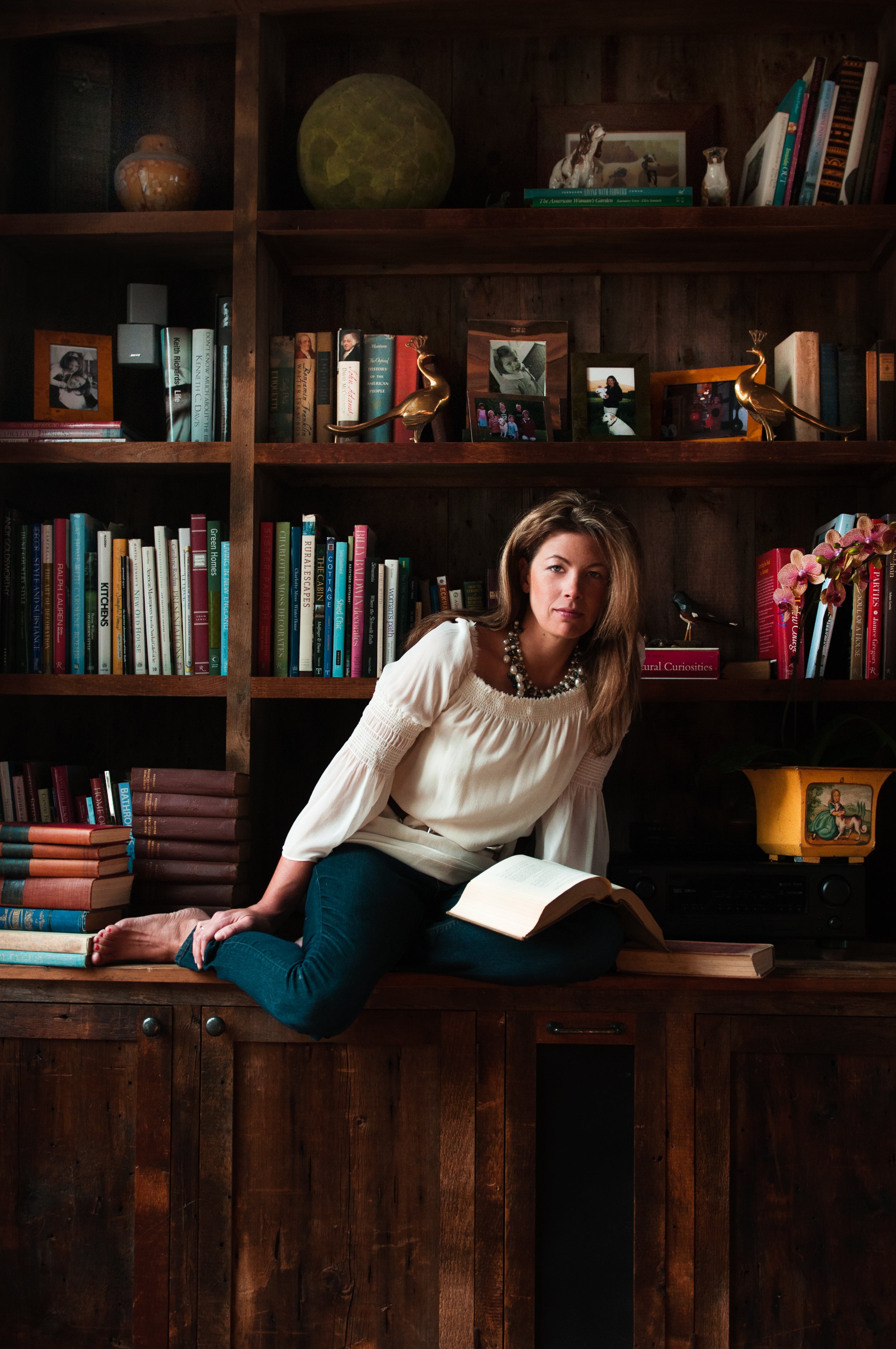The 50 States Project is a yearlong series of candid conversations with interior designers, state by state, about how they’ve built their businesses. Today, we’re chatting with Manchester, Vermont–based designer Amy Thebault about how being turned down for a raise prompted her to start her business, why she made her store by appointment only, and why she always trusts other people with their own talents.
What was the moment you knew you wanted to be an interior designer?
I lived a lot in my mind as a kid. My grandmother was an art teacher, and I always wanted to become an artist and live in New York City. Instead of going to college after high school, I attended an apprenticeship for set design and scenic art at Cobalt Studios in upstate New York. It was a very unique experience—at 18, I was the youngest one, and I was living in this Catskills commune with super-talented painters and quirky individuals who had a passion for fine art. I learned how to draw to scale, build and sew; we were painting 30-by 60-foot canvases for sets every day.
While I was there, I saw the writing on the wall in terms of my future. All these painters who came [to help] were showing up in run-down cars and were always crying poor, and I thought it was really unfortunate that the industry does not support a true living wage. I loved the art part and the creative process, but I wasn’t sure it was the life I wanted. The apprenticeship was designed to be two years, but I decided one year was enough; I went to work as a mural painter for one of the weekend guest artists in New York. I was painting lots of cool things—hotel lobbies, or wood grain in someone’s library, or ceilings. It was really interesting, and I worked for him for five years.
You must have seen some of the most amazing interiors in the process.
I was living in New Jersey at the time, commuting into the city. One day, on the train coming home, I realized my dream of living in New York had come to fruition—that this is what I had always wanted. At the same time, again, I wasn’t getting paid that much, and I felt so stressed with the commute and city life that I decided to move to Vermont. That’s when I became an interior designer.
Why Vermont?
I always loved Vermont—the air, the quiet, the fact that there are no billboards. It’s just a different way of life. I enjoy the sun, and I wanted to spend my afternoons and weekends walking in fields and gardening. I wanted more green space, clean air, not a lot of traffic—and it was also affordable. When I was trying to figure out my next move after New York and New Jersey, most things I was looking at were either expensive or lacked green space, or they were inexpensive but too crowded. I answered an ad in a local Vermont paper that was looking for a designer. I really had no experience in it, but I was hired, so I moved to Vermont.
I drove up for the interview—I think it was on a Tuesday—and they had me start the following Monday. I got an apartment, went back to New Jersey, and then drove up the next weekend with whatever I could fit in my car, including my dog. I remember the leaves were just perfect that weekend, and the first day I showed up at work, the air was crisp, and I was just so grateful to have this opportunity.
What was the learning curve there?
I knew in my gut that I had a lot to learn, and I had to prove that I could do the work. It helped that I didn’t know anyone in Vermont—all I did was work, and when I wasn’t working, I studied every magazine and book they had, or pored over vendor binders to learn how furniture was constructed, examine all the different finish samples, or [understand] what went into the material of a cushion. I read them all back-to-back. I didn’t ever feel like I was working when I was working, which I guess is how I knew it was right.
One of the owners was traveling a lot, so she gave me all of her projects—she just handed me a stack of work to do, and I did it. Over the two years that I worked there, I developed a reputation because I did good work. I started getting calls for me at this firm, which was really cool. It was the first time in my adult life that I felt like I was doing the right thing for me.

How did you know it was time to leave?
I asked the firm for a raise and they turned me down. I basically said, “Thank you so much,” and left them to start my own business the next day.
Had that been your plan all along—to go out on your own if they said no?
I was very surprised that they turned me down for the raise, to be honest. I knew the numbers of the business so well, and I thought it was really foolish of them to turn me down. It wasn’t on the top of my list to start my own firm, because I really didn’t have the funds to start a business, but I knew that my worth was more [than what they were willing to pay me].
How did you get your business off the ground?
That weekend, I got a phone call from a real estate office that had a client wanting to meet. I said, “Well, I just need them to know that I’ve started my own business, so if they want to go with the other firm, that’s fine—and if not, this might be a little bit more complicated because I have no product, no vendors, no computer, no business cards. I have nothing.” They said, “Why don’t you come to meet in person anyway?”
The client was also a business owner, and when we sat down, I was very honest with her. I said, “Listen, I’m not in a financial place to start a business or do a project. I could do it if you would trust me, but I would need all the money upfront, including my profit.” She wrote me a check that day for the full amount of the project, and I ordered a computer and a printer, and got business cards and a phone. And so it began that way.
How did she know you were right for the job?
I don’t know, actually. I think I was pretty confident that I could do the job, because I had done many before. I had been doing all these projects in Vermont, and she had seen some of my work in other homes. I fully trust that when two people meet—whether it’s a client-designer relationship or a designer-vendor relationship—you can pretty much tell right away whether or not there’s good communication, and there definitely was with her.
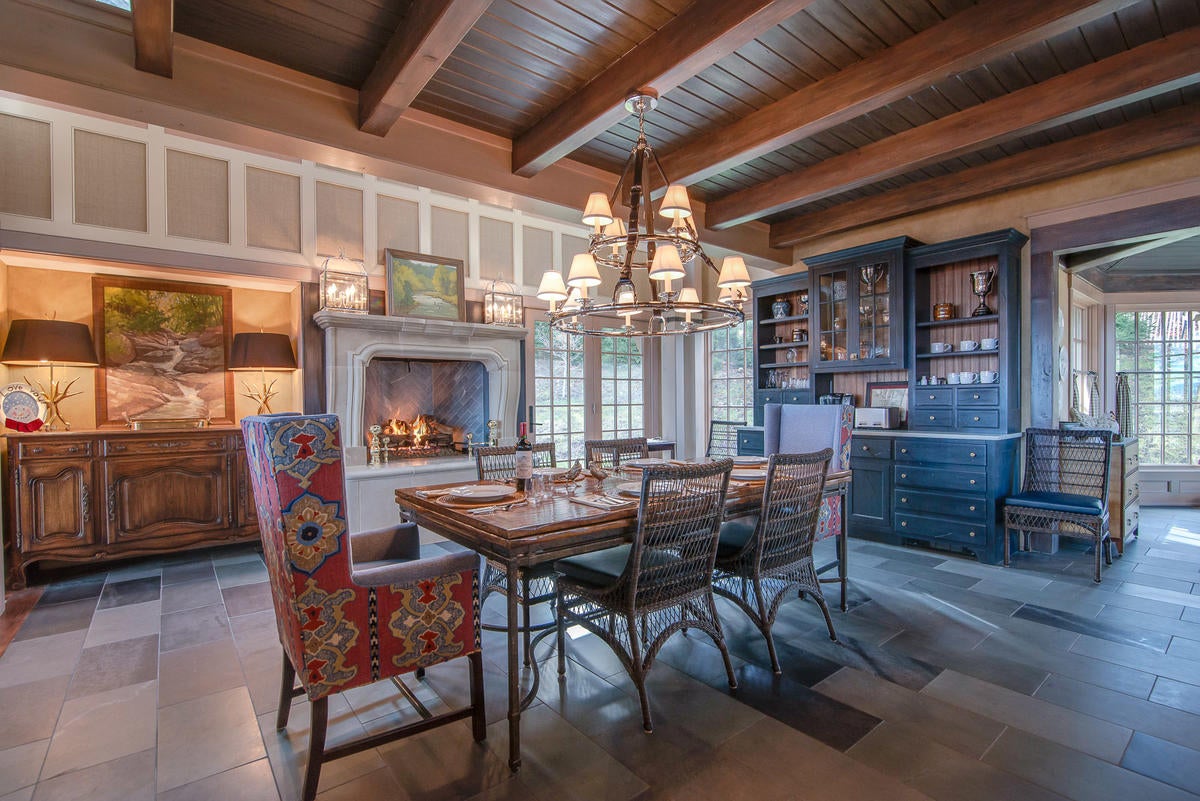
How did you find your own voice and shape your own aesthetic?
I think that is still evolving. It’s a daily practice, trusting yourself and [believing in] what you know. When I see a room and meet a client, it’s like starting a soup. You start with some carrots, celery, some broth, and salt and pepper, but you can add so many more things to it, depending on the client’s personality. They start the same, but no two soups are alike.
You can design one [space] a million different ways, but it’s really all about making sure that the end result is what the client wants. It’s not altogether different from theater—it’s very similar to designing a set for a play or a musical. The collaboration is super fun for me. If I were a commercial designer and did hotels, I don’t know that I would have quite as much fun doing it.
What is the breakdown of primary residences versus vacation homes in your local work?
In Vermont, I’d say 75 percent of my projects are second or third homes, and the other 25 percent are for people that are living here full-time. But it’s a different clientele—it’s not like a Wall Street guy is going to be moving to Vermont anytime soon! Maybe when they retire; I’ve done a bunch of retirement homes for people.
How does that change the way you work with them, or the things that people are looking for?
I think second homes are lived in totally differently than primary homes. I definitely want it to be fun for them—a lot of the reason people have another house is just to get away from their Monday-to-Friday life.
People want to be in Vermont for the same reason I decided to move here: the peace. It’s just quieter. So I want that sense of peace to be in every single house: Why are we here? We’re here to have fun and to relax.
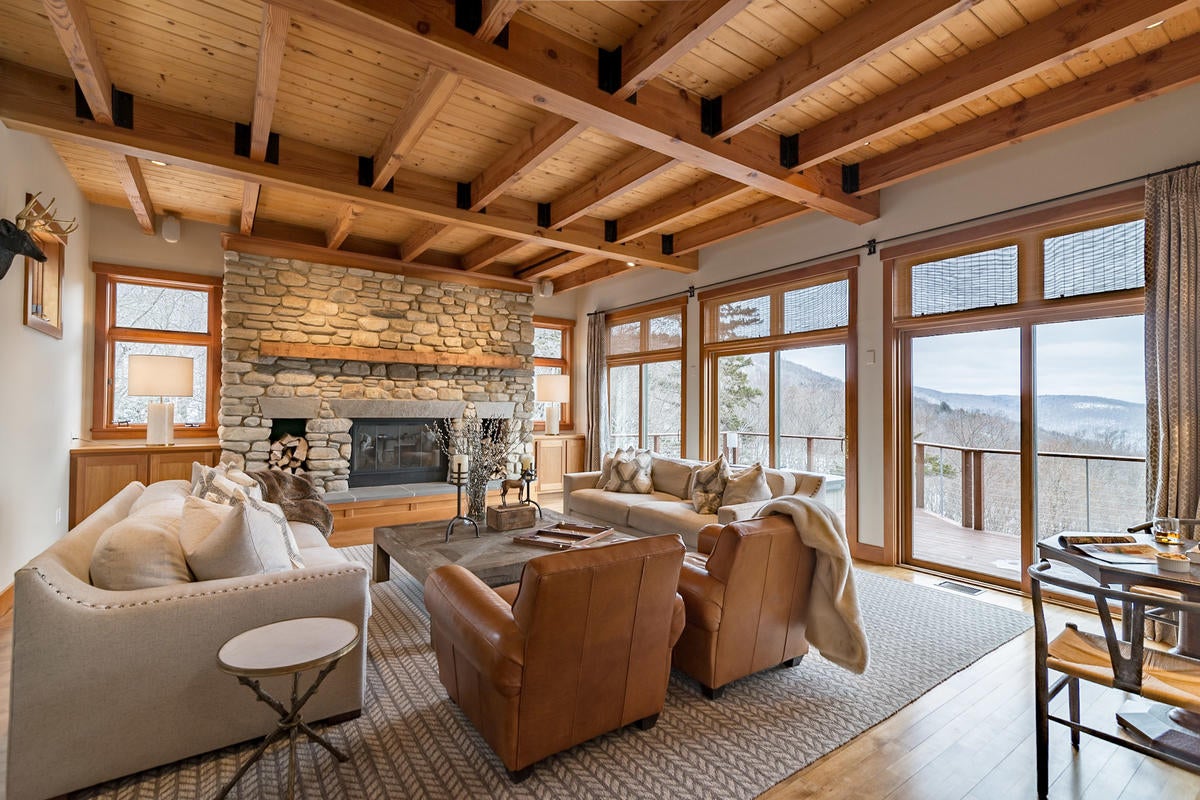
What are the clients like who live full-time in Vermont?
They’re mostly younger people that have families. There is a practicality to living in Vermont—you need big mudrooms for lots of gear, hockey bags, boots and coats, and because you’re dragging in mud from hiking. For a lot of them, their houses are smaller, but not necessarily less nice. It’s just a different aesthetic—less fanciful but still very beautiful.
Is there a big design community?
In my particular community, I know of five or six designers and am familiar with all of them. I’m not going to lie—I’m competitive. I want to win all [the jobs], but I know I can’t do them all. I have to trust that there is a rhythm to the bigger picture in life, and that I am provided for, and that I have as many things as I can handle at any one time. I have to surrender to that. I wouldn’t say there is a lot of hanging out together and trading of secrets. But also, Vermont in general is not social in that way—we’re not a huge going-out community. There is a lot of hanging out in homes by the fire, personal dinner parties, that kind of thing.
What resources are available locally?
There isn’t much shopping to do up here—I mean, antique stores to some degree, if you’re looking for something unique, but there is no big lighting store to browse. You have to design it in your mind and then source it.
We go to High Point or Las Vegas to see everything, and then get it shipped—that’s never been an issue. We also have reps who come visit us every quarter for fabric, wallpaper, furniture, lighting and accessories, and thank God they do, because that keeps our travel to a minimum. We can do more work and spend less time on the road. The craftspeople here are also abundant, though it may take a long time and cost a lot. Living in Vermont is sometimes a less expensive place to live, but the taxes are high and the wages are not always super-high. I think that’s why people are sometimes surprised when they get quotes from a painter or a metalworker. Like, “Why is this so much money?” But they’re supporting their life—and I really like to support their life, especially the artists, because they’re just like me.
As more trade brands have moved online, has that changed the way you work?
It really hasn’t changed the way I work. It’s easier to get pricing, it’s easier to find stock. You can also share things via email so quickly with clients—but that’s a double-edged sword, because people have expectations of things happening a lot faster than is sometimes possible.
The industry is moving slower than their expectations.
Yeah. I mean, things take time. We can do our proposals a little bit more efficiently, for example—though I do love sending my proposals through mail. I think there is something nice about it. I’m old-fashioned in that way.

What does your team look like?
My team is just one other person. Her name is Corinne. She and I grew up in the same town in New Jersey, so we speak the same Jersey language, but we met in Vermont. We can read each other’s minds. She does all the proposals, the billing and accounting, and helps administratively. She’s also my best friend.
How long have you been working together?
For 13 years.
When did you know that the thing you needed was that administrative and bookkeeping support?
Well, it’s something I realized I really don’t like doing. In the first few years of my business, I had four people working for me—two administrative, two design assistants. We were super busy, and financially it was fine, but I was spending a lot of my time managing others and answering their questions, and I did not feel creatively inspired. Then I got divorced, and at the same time went down to having one or two people work for me, and I was much happier. I never want to have that many employees again.
How does that change what you can say yes to?
That’s a really good question, and one that I continually try to balance. Being in business for 20 years, we get old clients calling that want little things. I am so grateful that they’re still calling us, but it always feels like I have to do those things because we did the house originally. Sometimes that puts me over the edge, those little bits—those are the things that take me the longest. It’s much easier to do a whole project at once and be done with it!
Right now we have about 12 to 15 projects going on. Some of them are big houses, and some are just a few rooms. And then the small things—we really do call them “bits.” Those small bits are always fine until that table you wanted is discontinued and we have to spend two hours finding a sub—those are the things that put you behind. A client wants this one printed fabric for their bedroom; you go to check it, and there are only two yards left and the mill is dropping it. Then you spend the next week or two trying to find something just like it. It’s not really efficient, but it is part of the industry, unfortunately.
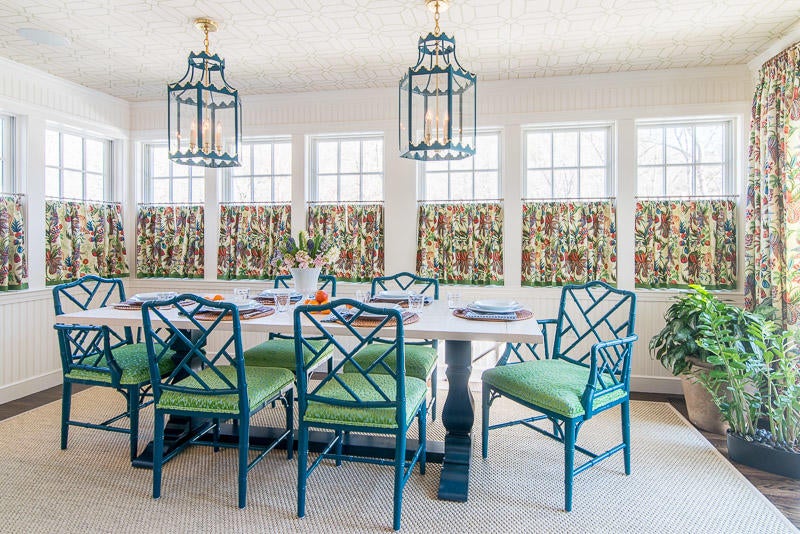
What is the scope of those ‘bits,’ typically?
It might be a client saying, “I’m ready for a bedroom refresh,” so maybe keeping the carpet or the wall color, but changing the bedding and drapery and lampshades. When I do a little refresh for myself, whether it is new pillows or new bedding, it does feel so good to have that breath of fresh air come in. I know it’s important to the client, but sometimes it can be hard to wrap my head around something small like that.
For sure. How do clients usually find you?
Most new leads are from my website. We redesigned it a few years ago, and that’s when it seemed like things were turning around. The guy who designed asked me, “What do you want?” I just said, “I want you to do what you would do if you were me. I don’t really want to be involved—I want you to make it look good.” Trusting other people with their talents is so important. I could never have come up with some of the good things that he did, and it was fun to see the creative process unfold.
Has COVID disrupted the project balance in terms of workload?
It has, insomuch as things are delayed. We take the time to call the vendor and follow up to see, When is it coming? Then when it doesn’t come, we call again. That’s a bunch of time that’s—I wouldn’t say it’s wasted, but it feels like wasted time. We’re spending a lot more time chasing things down.
For the most part, we are a state that has had really good success in terms of preventing the spread of COVID, and a lot of people have moved to Vermont, or at least bought homes here, so that’s great for business, but it’s still going to take the time that it’s going to take.
We’ve got two kitchens right now that aren’t finished because the appliances are not in. As we are approaching Thanksgiving, it’s stressful, because we get the calls from the client asking, “Have you heard? Is it coming? Are we going to be able to spend Thanksgiving there?” I’ve reconciled with the fact that it’s really not about Thanksgiving, it’s about what that family wants for the time that they have together. Especially with second homes, that time is super valuable. I think: Is there something in my power to change this outcome? If there is, I’m going to try. If there is nothing, then I just have to give it up and accept that this kitchen is probably not going to be done by Thanksgiving.
Does all of that follow-up add to the cost of the project, or is it just time you’re losing?
It’s time we’re losing—we don’t bill for that. It just doesn’t feel right in my gut. The other thing is, if someone really doesn’t like something—even if it was custom-made—we always take it back. It’s a bummer sometimes to lose part of your profit, but in the end, you keep the relationship with your client. That’s super important to me.

How do you approach billing overall?
We charge an hourly rate for all of my time, whether it’s shopping, meeting, driving to the meeting, installing or correspondence. Correspondence is huge, and we do bill for that time. There are clients who are really efficient at communication, and others that are not. Sometimes you’re over-communicated with. I try to tell everybody in the beginning, “Hey, I cannot receive text messages about design-related questions. Please only use my phone for scheduling or calling.” Otherwise, if you have 10 projects going on, and you have 10 clients texting you all day, it’s too much to track—and sooner or later, they will drive you bananas.
We just send invoices out once a month for all that time; then, if people choose to buy product from us, which most do, we do a wholesale price plus 30 percent.
Do your clients respect that markup?
Some struggle—and if they ask for 25 percent, we just say, “Thanks, but no thanks.” It doesn’t feel fair to have some clients pay 30 percent and others paying 25 percent. That is also sometimes writing on the wall for whether they value what we bring. I don’t feel like I am getting rich on this. I feel like I am creating value, and I make a nice living. I also work very hard. I don’t apologize for that pricing structure. If it doesn’t work for a client, then we just say, “Good luck with your project. Thank you anyway.”
You also opened a retail store—how do you balance the two?
The store was open from Tuesday to Saturday, 10 a.m. to 5 p.m., for five years, but four years ago, I changed it to be by appointment only. That was another piece of learning about myself: I loved to arrange the shop—to make it look cool, and to sell interesting small products. It’s delightful, and it delights people to buy a cool picture frame or an interesting print. But it’s all really small. It’s more small bits, but it takes up a lot of space in your brain—and a lot of time. I also realized I didn’t love dealing with all of the packing, unpacking and placing orders. A client would buy 10 candle holders, and then would come back a year later wanting two more, but you couldn’t get them again. There is just a lot to retail; if I were ever to go back to full-time retail, I would 100 percent hire someone to run the show.
What kind of opportunities does that appointment-only space present, and how did that arrangement change how customers shop?
The opportunity it provides is for us to really focus on the design work and not be distracted by people coming in. Even though retail is on the ground floor and the design office is on the second floor, it’s a loft space, so you can hear everything. I think we’re also just a little more picky about who we work with. It’s not just everybody that can walk in. It might sound snobbish, and it’s definitely not meant to be, but when we’re working on projects, it’s really nice to be able to focus on them.
And do you have people making appointments and coming in to shop?
Yeah, it’s really cool. When they arrive, it’s like having tea with someone. “Would you like some tea, or a Diet Coke? Let me tell you about all the things in here.” It’s a more curated experience.
That’s sort of a creative experience in itself, in addition to a selling environment.
Yes, exactly.
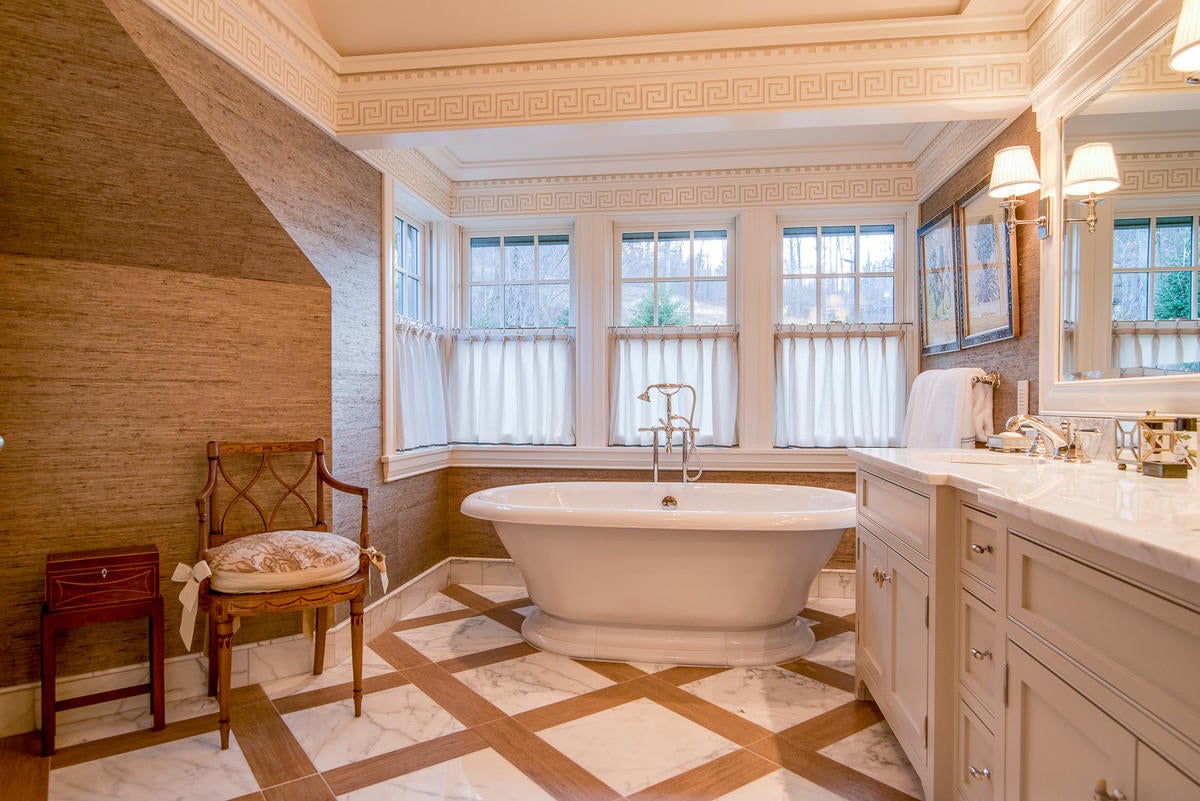
What does success look like for you?
Success to me is going to work every day and being happy, being creatively sustained, and feeling grateful for all of the work that I am given the opportunity to do. I am always amazed—although not every day is a good day. We still have problems! Just last week, we had the carpet installed in the wrong room—the wrong carpet in the wrong room—so we had to order a new carpet. These things happen, but again, in the end, I’m really grateful for our relationships with the vendors and installers. Just everybody working together, that’s success to me. Being sustainable in terms of a financial standpoint, not going backwards, but continuing to grow, and also being creatively challenged. What’s something I haven’t done? How do I get there?
What’s on your bucket list?
That’s a good question. My sense is that when I’m ready, it will show up—when you’re ready to learn something, the teacher always appears. I fully trust in the universe pressing me when I need to be pressed, and letting off the gas when I need it to.
For me, success is also very much about the relationship with the client, and making sure that I am serving them. That piece also makes me feel successful—it’s bringing joy to someone else’s life.
That’s a really beautiful way to think about it. How do you keep that joy piece of it present in the day-to-day work?
I feel very lucky that I get to do this, but you have to have fun. You have to make jokes. You just have to, because otherwise it can get really boring—you can get in a really bad groove. Keep looking at different ways to do things. Try to keep it fresh, and also try not to get mired in the crap that does happen, like the carpet being installed in the wrong way. You can spend a day or two being upset about it, but after that, you really need to move on.
To learn more about Amy Thebault, visit her website or find her on Instagram.















